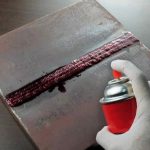Horse connectors come in handy by securing and connecting hoses of all kinds to diverse types of pressurized air and water outlets. Heavily used across the board, hose connectors are used in homes, industries, commercial settings and many other areas. Highly versatile, they’re very important in different scenarios as discussed here.
Supports all manner of media
Handy and usable in diverse backgrounds, hose connectors are applied in domestic, industrial to commercial and many other areas. As a result, they’re used to connect hoses and different types of components and heavily used in hydraulic, pneumatic and water systems. Normally, hose connectors are engineered to support diverse media as they pass through, such as liquids like hydraulic oils and various chemicals, compressed air and other gasses and solids such as sugar, wheat, fine flour and much more.
Also known as joiners, fittings, couplings, tap connectors, adapters and pipe connectors or rapid-connect couplings, hose connectors are highly categorized within the wider pneumatic adaptors, tubing accessories, plumbing and piping range of joiners due to their heavy application in assorted industries.
Vital for varied settings
Hose connectors are critical for different areas, industries and applications. Wherever hoses are required to be joined securely to move different granulated solids such as sugar or wheat, including gasses/air and liquids, connectors are required.
Connectors are also used heavily in areas where pumps are required, including water sprinklers, spigots, pressure washers, cooling systems in industries, gardens and greenery watering in outdoor or kitchen taps. Joiners are required in air conditioning, ventilation and heating systems, granular and bulk transfer of particles, water guns in industries and printing businesses in ink transfer processes.
In many DIY, commercial and industrial systems joining two hoses together always comes up and usually carried out through the use of double-ended joiners to lengthen hoses, including water flow diversion in different directions as well as in broken hose repair.
Handle extreme conditions and settings
An obvious thing about a connector is its manufacturing and sturdy features. Considering they’re applied in extreme circumstances in hoses or joining hoses that pass or process all manner of substances, they need to be durable, strong and sufficiently sturdy to avoid damages, spills and accidents while performing their functions. Hose connectors are made of different materials such as aluminium, steel, plastic, stainless steel, brass or monel (essentially a nickel-copper type of allow liked for its non-corrosive nature).
Depending on the kind of hose connectors needed and where you intend to apply them, the choice of joiners usually has an effect on durability. For instance, plastic hose connectors aren’t the best in high-temperature settings but stainless steel couplings will do just fine. Despite that, plastic fittings are also used in varied scenarios in case the heat, pressure, gas or chemical situation where the hose is used has zero damaging effect on the material.
Sturdy connectors are ideal since they don’t expand or contract, which can cause serious malfunctions, spills and leaks. Heat may have an effect on most materials, including metals, but choosing stainless steel or brass joiners for instance might be perfect for cold or high-heat in areas where temperature fluctuations are expected. Such couplings are usually resistant and strong.
Robust against jolts
Hose connectors are used in many settings. Considering their design, engineering, industrial tests and manufacturing, they’re perfect for areas where mechanical jolts and constant shocks are expected. Between metal and plastic joiners you should be able to select the proper connectors capable of effectively absorbing shocks and strong enough to offer firm support.
Non-porous depending on choice
Hygiene is important even when working with horse connectors. Considering connectors are of different materials, you can actually select a fitting that resists germs and eventfully non-porous. This is critical, especially if the hose connector is applied in scenarios where water, beverages and foods for human consumption pass through. Hygienic hose connectors ensure whatever passes through isn’t poisoned or polluted but untainted and unadulterated.
Compatible connections
Getting the most out of your hose at home, industrial or any other commercial setup is as critical as finding a compatible hose connector. The benefit of hose joiners is that they come in diverse designs and generally come in either male (inserted) or female (encircled) including a range of subtypes applied in as many operations as possible. For instance female hose fittings come in female-to-female, double-female or male-to-female designs while male ones vary between male-to-male and male-to-female hose connectors.
Right from DIY to industrial and commercial applications, hose connectors are heavily in use in virtually any place where hoses are required. The benefits are immense and you can even select the connector based on the type of material and application.



